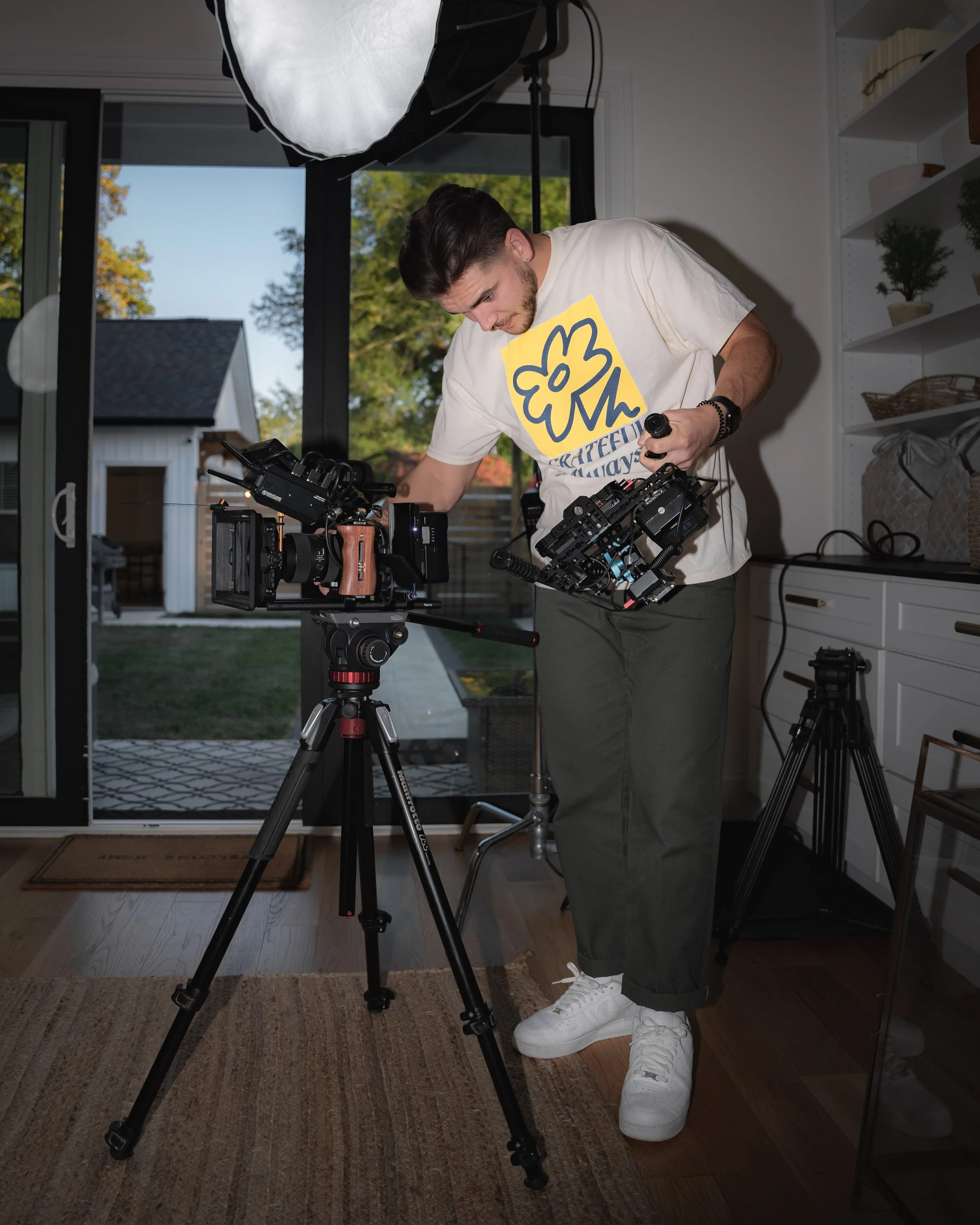Why Every Service-Based Business Needs a Video Marketing Strategy
Service-based businesses face a unique challenge: unlike a physical product, your value isn’t something prospects can immediately see, hold, or compare. Instead, clients must evaluate your expertise, credibility, and ability to deliver results—intangibles that are often difficult to communicate through static content alone. This gap often leads to slower sales cycles, limited differentiation, and missed opportunities to build trust at scale.
Video marketing addresses this challenge by making the intangible tangible. Through video, you can demonstrate your process, highlight client success stories, and position your brand as a trusted authority. Research consistently shows that video not only captures attention more effectively than text or images, but also drives higher engagement and stronger recall, which are two critical factors in influencing service-based purchasing decisions.
In this article, we’ll explore why a video marketing strategy is no longer optional for service-based businesses. You’ll learn how video can strengthen your brand presence, shorten decision-making timelines, and ultimately help you convert more prospects into long-term clients.
Part I: Preproduction
The planning phase, also known as preproduction, is the foundation of any successful video project. This phase is often the most important because it ensures your video aligns with your business goals, reaches the right audience, and tells a compelling story. Skipping or rushing preproduction can lead to miscommunication, wasted resources, and a final product that misses the mark.
Key steps in preproduction include:
Defining Objectives
Start by clarifying the purpose of your video. Are you aiming to generate leads, educate clients, showcase your expertise, or build brand awareness? Clear objectives guide every decision that follows.
Identifying Your Audience
Knowing your target audience ensures your messaging, tone, and visuals resonate. Consider demographics, pain points, and how your service solves their problems.
Developing the Story
Create a script or storyboard to outline the key messages, narrative structure, and visual elements. This step ensures your story is coherent and engaging.
Planning the Logistics
Determine locations, talent, props, equipment, and scheduling. Coordinating these elements in advance reduces delays and keeps the production on track.
Budgeting and Timeline
Establishing a clear budget and timeline prevents unexpected costs and ensures deadlines are met.
Shot List and Production Plan
Break down each scene or segment, including camera angles, lighting needs, and any special considerations. This acts as a roadmap for the production team.
Interview Questions and Messaging
Craft interview questions that directly support your video’s objectives and key messages, ensuring each response reinforces your brand story and highlights the value of your services.
By dedicating sufficient time and attention to preproduction, businesses set themselves up for a smooth production phase and a polished final video. Preproduction turns ideas into a concrete plan, ensuring your video communicates your message effectively and meets your strategic goals.
Part II: Production
The production phase is where your preproduction planning is executed, and your video begins to take tangible form. This stage is critical because the quality of your footage directly impacts the effectiveness of your final product.
During production, several key elements must be managed:
Executing the Shot List and Storyboard: Each planned scene, angle, and visual element is captured to ensure your narrative flows logically and effectively.
Directing Talent: On-camera presenters or interviewees are guided to communicate clearly, naturally, and in alignment with your messaging goals.
Managing Technical Factors: Proper lighting, sound, and camera settings are essential to maintain professional quality.
Problem-Solving on Set: Unexpected issues such as location changes, timing, or weather are addressed to keep production on schedule.
Capturing Supporting Footage (B-Roll): Supplementary visuals provide context, reinforce your message, and enhance storytelling in postproduction.
A structured, strategic production phase ensures that your footage is high-quality, organized, and ready for efficient postproduction, setting the stage for a polished, impactful final video.
Part III: Postproduction
Postproduction is where your raw footage is transformed into a polished, engaging video that communicates your message effectively. This phase is equally important as planning and production because even well-shot footage can fall flat without careful editing, refinement, and strategic distribution.
Key components of postproduction include:
Editing: Arrange your footage to tell a coherent story. Trim unnecessary content, sequence scenes for clarity, and ensure pacing keeps viewers engaged.
Audio and Music: Enhance your video with clean audio, background music, and voiceovers that complement your message and reinforce the emotional tone.
Graphics and Motion Design: Add lower thirds, titles, transitions, and animations to make your content visually engaging and reinforce key points.
Color Correction and Grading: Adjust lighting and color to create a consistent, professional look that aligns with your brand identity.
Review and Feedback: Share rough cuts with stakeholders for feedback, ensuring the video meets objectives and resonates with the intended audience.
Distribution Strategy
Decide where and how your video will be shared—social media, website, email campaigns, or paid ads. Optimizing formats and platforms ensures maximum reach and engagement.
By investing time in postproduction and strategic delivery, businesses can ensure their videos not only look professional but also achieve measurable results. This structured approach turns raw footage into a compelling tool that builds trust, educates your audience, and drives meaningful engagement with your brand.
Part IV: Start with Internal Content
Not every business needs to hire a full production team to start creating video content. Learning to use internal resources—whether it’s staff, existing equipment, or in-house software—can be both practical and strategic. Developing video skills internally allows your team to produce content quickly, maintain brand consistency, and experiment with ideas without relying solely on external vendors.
Tips for getting started internally:
Identify Internal Talent: Look for team members who are comfortable on camera, have strong communication skills, or are interested in learning production basics. Even small contributions, like conducting interviews or capturing B-roll, can make a significant impact.
Use Available Tools: Modern smartphones, entry-level cameras, and basic editing software can produce high-quality content when combined with good lighting, clear audio, and proper planning.
Start Small: Begin with short, simple videos—like client testimonials, behind-the-scenes clips, or quick educational tips—before moving on to more complex projects.
Create Guidelines: Establish brand and messaging guidelines to ensure videos remain consistent in style, tone, and quality.
Invest in Learning: Encourage staff to take short courses or tutorials in shooting, editing, and storytelling. These skills improve your content and strengthen your team’s overall marketing capabilities.
While internal video production can be effective for certain projects, there are clear advantages to hiring a professional video production company:
Expertise and Efficiency: Professionals bring technical knowledge, creative insight, and workflow experience that ensures higher production quality in less time.
Equipment and Resources: Production companies have access to advanced cameras, lighting, and audio gear that can elevate the look and feel of your videos.
Strategic Guidance: Experienced teams can help you plan, script, and storyboard videos in alignment with business objectives, ensuring each video delivers measurable results.
Polish and Consistency: Professionals can ensure a cohesive visual style, proper editing, and optimized distribution across platforms, which can be challenging to achieve internally.
The ideal approach often combines both strategies: developing internal video capabilities for quick, ongoing content while leveraging professional teams for high-stakes or strategic projects. This balance allows businesses to stay agile, cost-effective, and consistently produce high-quality video content that drives engagement and growth.
Part V: Conclusion
Understanding the three phases of video production—Planning, Production, and Postproduction & Delivery—is essential for creating videos that effectively communicate your brand’s message and achieve your business goals. Each phase builds on the previous one, ensuring your content is strategic, professional, and impactful.
Don’t let the complexity of video production hold your business back. By following a structured process and leveraging expert guidance when needed, you can produce videos that engage your audience, build trust, and drive measurable results. Start planning your next video today.




